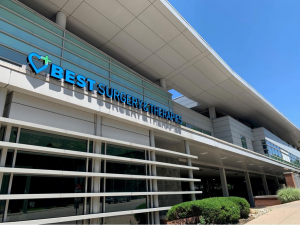Peroneal Nerve Injury
Peroneal nerve injuries occur when the peroneal nerve is damaged, leading to leg pain in the knees and lower extremities. This condition can have a multitude of effects, including the inability to perform everyday tasks and debilitating pain.
If you are interested in learning more about peroneal nerve injuries and about the treatment options available through BEST Health System, follow this guide.
Causes
There are many different ways that the peroneal nerve can be injured. Some of the causes include, but are not limited to:
- Knee fracture or leg fracture
- Dislocation of the knee
- Knee replacement surgery
- Hit replacement surgery
- Peroneal nerve compression
In addition to these, degeneration with age could be another cause of peroneal nerve damage for individuals with knee or leg pain.
Treatments
A patient’s treatment is fully dependent on the location and severity of their nerve damage. There are a handful of conservative treatment options available for patients wanting to avoid surgery, these options include:
- Physical therapy
- Knee brace
- Leg brace
- Orthotics
If conservative methods have been exhausted, a patient may be a candidate for surgery. There are different approaches to peroneal nerve surgery that will depend on the patient’s lifestyle and how serious their damaged nerve is.
If you are interested in learning about different surgical procedures offered through BEST Health System, contact our team today!
Symptoms
Peroneal nerve injuries often result in pain and discomfort that prevents patients from doing everyday activities. In addition to pain, these are other symptoms that someone who is suffering from peroneal nerve damage may experience:
- Inability to move the foot
- Inability to point toes
- Numbness in the shin
- Foot drop gait
Sometimes, injuries to the peroneal nerve may go unnoticed. However, if the damage is serious, it could be vital that the patient meets with a medical professional to prevent further injury.
Diagnosing a Peroneal Nerve Injury
The diagnostic process is essential for a doctor to prescribe the most effective treatment option. First, the specialist will review the patient’s medical history and then complete a comprehensive exam.
Next, the specialist will have to determine the cause of the nerve injury through one of the following procedures:
- MRI
- Ultrasound
Reach out to BEST Health System
Regardless of where you are in your process of recovery, BEST Health System offers assistance through each step. Contact our team and allow us to help you find the most effective, least invasive treatment option available.
If you have experienced any of these symptoms or recieved a diagnosis and need treatment, BEST can help. Take the first step towards relief today.
Related Articles
A Map of BEST Health System's Ohio Locations
BEST – The Health System Redefining Care Throughout Ohio BEST Health System is a modern healthcare system with accessible locations throughout the state of Ohio. […]
5 Things You Didn't Know about Joint Care
Joint pain can be caused by a number of different conditions, the most prevalent being arthritis. If it is severe it can keep your day-to-day […]
Four Treatment Options for Tarsal Tunnel Syndrome | BEST
Similar to carpal tunnel syndrome in the wrists, tarsal tunnel syndrome is a condition that can cause severe ankle pain for those affected. The tarsal […]
Five Treatment Options to Help with any Type of Tendonitis
Tendonitis, also spelled tendinitis, is an injury caused by inflammation and damage to tendons. In the body, tendons are tough flexible pieces of cartilage that […]



